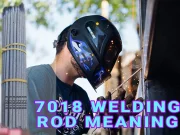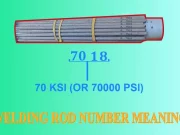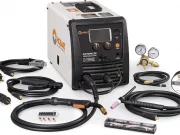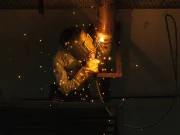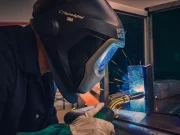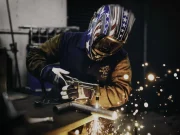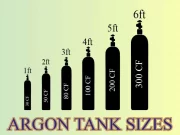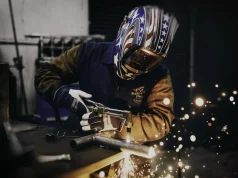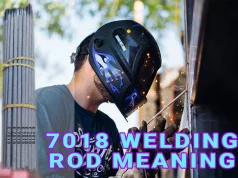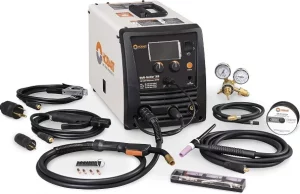
What are the differences between the 6G vs 6GR welders? I get asked such questions a lot. However, when it comes to tubular structure and pipe welding, these are the welding positions that usually come to mind. So, quickly, let’s take a look at the differences between them.
What differentiates the 6G from the 6GR?
Firstly, the difference between both is the R in the 6GR. The letter R indicates that 6GR welding consists of a restricting ring. Another difference between the 6G and 6GR is the bevel preparation. The bevel preparation is a procedure done to prepare the metal before one can start welding. The welder cuts a slope at a specific angle on the metal, particularly at the edge. Furthermore, in the 6G certification test, the welder has to weld in all positions while the 6GR position is for TKY joints.
That’s it on the difference between the 6G and 6GR welder. Both are used to test welders for certification purpose. However, continue reading for more information on the topic.
Differences Between The 6G and 6GR Test Positions
If you are familiar with the 6G and 6GR test positions, you will understand how important both are when welding pipe and tubular structures.
Now let’s look at what the 6G and 6GR positions imply to help broaden our understanding of how they differ.
What’s the 6G all about?
Firstly, the 6G position is the type whereby your tubular weld joint has to be included at an angle of 45 degrees. It’s a difficult test to pass, though not impossible. For a 6G welder to pass this test and obtain certification, the test piece must be welded in its original position.
What does the 6G test entail?
This test takes into account all the positions. In other words, the welder seeking the certification has to weld in all the positions (overhead, vertically and horizontally) and weld both hands, too. You also cannot move the test piece from its position when you are welding. You have to weld in the position where the test piece originally is to secure qualification.
What is the 6GR all about?
Alright, here is another welding certification, but this turns out to be more challenging. The G6 test positions and welding procedures are quite demanding. But concerning difficulty levels, the 6GR tends to be the hardest compared to the 6G.
Anyway, the 6GR is still more of the 6G position test position, only that it features a restriction ring.
What does the 6GR test entail?
Well, there are diverse weld test positions. But among welders, passing the 6GR test is a significant achievement that one needs to be proud of, career-wise. Not everybody gets to scale through this test because of the high technicality involved. Here, you will find a restriction plate wrapped around the pipe’s circumference. This plate restricts the angle of the filler metal or electrode. And as a consequence of this restriction, the welding becomes more challenging than it should be.
| For knowledge sake, let’s look at what the letters and number mean.
The number 6 stands for the positions. The letter G stands for Groove. The letter R stands for restriction. |
So, when you find a 6GR welder, know that the said individual has successfully overcome the obstacle in this test piece and welded it perfectly to have gotten that certification. The R means there’s an obstacle to overcome.
Other Differences Between 6G and 6GR welder
Well, most individuals claim that the 6GR welders tend to make more money than 6G welders, and that is a reasonable point, given how difficult it is to qualify as a 6GR welder.
So, such a claim might not be out of place. But then, other factors can contribute and determine who gets more pay. So, it’s not just a matter of obtaining 6GR certification. However, 6GR welding is somewhat more challenging to obtain.
Further, another notable difference is that obtaining the 6G certificate qualifies a welder to weld pipe butt in all positions, while obtaining the 6GR certification, on the other hand, means the welder is qualified to weld structural TKY connections.
Another difference is the bevel preparation. It differs between the 6GR and the 6G test positions.
What You Need To Consider In 6G welding
Pipe welding is not the easiest of welding procedures. It has a steep learning curve and takes time to master. Therefore, if you want to pass the 6G certification with flying colors, then you need to know the ins and outs of this style of welding.
Let’s run through some of the things you need to know before facing your 6G welding test.
Tip#1 – Understand the pipe welding process
When it comes to pipe welding, different types of welding procedures exist. However, the most common and widely used is the “open root welding.”
How can you identify an open root welding? It’s simple. If the tacked backing plate is not used in the joint being welded; then it’s an open root welding. In this case, you are going to be welding the material across a gap.
For knowledge sake, you also need to understand that there is open and closed root welding. Your choice of which to choose depends on the weld joint’s service condition and end-use.
How do you identify if it’s a closed root weld? Again, it’s simple. A closed root results where the adjacent members are touching each other, and there is no space or gap between both. But in the open root, there is a predefined space or gap. Space or gap that’s between both joints is what is called the root opening.
Several factors may also determine whether to use an open root or closed root. One of them is the material. Most materials are not ideal for open root joints, particularly since you are going to be dealing with full penetration welds.
Another factor is the thickness of your base material. For most welding procedures, a thinner material will not work well with a larger root opening. Thus, for open root joints, a thicker metal will be deal.
Tip#2 – Choose your best position
One rule every 6G welder understands is that the test piece has to remain in the same position throughout the welding process. You dare not change its position. You may have to weld using both hands.
You will have to move around the pipe when you are welding. The idea is to have a proper view, access the space and weld with ease. But the issue with this movement is that you might end up blocking your view as you change from one position to another to weld.
So, the best step is to determine your best side. By this, I mean the side you know will be more convenient for you to weld the pipe. It will be wrong for you to start welding from the right-hand side when you are right-handed.
Well, you just need to anticipate the obstacles that will make it difficult for you to get a smooth weld and overcome them. That’s how to pass the test in flying colors and become a 6G welder.
Tip#3 – Secure the materials together.
If you don’t want to make the 6G welding harder than it is, then you need to consider tack-welding the material together. It will help to hold the materials in place and give you the freedom to focus on getting a quality weld. The later, you can consider cutting the tacks off to avoid defects in the finished product.
| NOTE: In 6G welding, your final result is what would determine if you pass the test or not. It’s not the fact that you attempted or completed the weld. So, if you want your results to be great, avoid starting or stopping your welding in the gap. Make sure you begin or stop the welding on the sidewall. |
You should also check your tacks and ensure that they are all tied up firmly as you continue to make progress from one point to another. Failure to do so will make the welding process difficult. You may also not be able to finish your welding test in record time.
Another critical factor you need to consider in 6G welding is the level of penetration you were able to achieve. Bear in mind that a poor penetration is a recipe for disaster, and all your effort will go to waste. So, what’s the wise thing to do? Ensure you achieve full penetration.
Conclusion
So, we have come to the end of the comparison between the 6G vs 6GR Welders. The difference between both is the restriction and the bevel preparations. They are also crucial in tubular structures and pipes. However, the 6GR is considered to be more challenging because of the obstacles a welder needs to overcome to have a smooth weld. If you are pursuing a 6G or 6GR qualification, then we wish you the best of luck.


